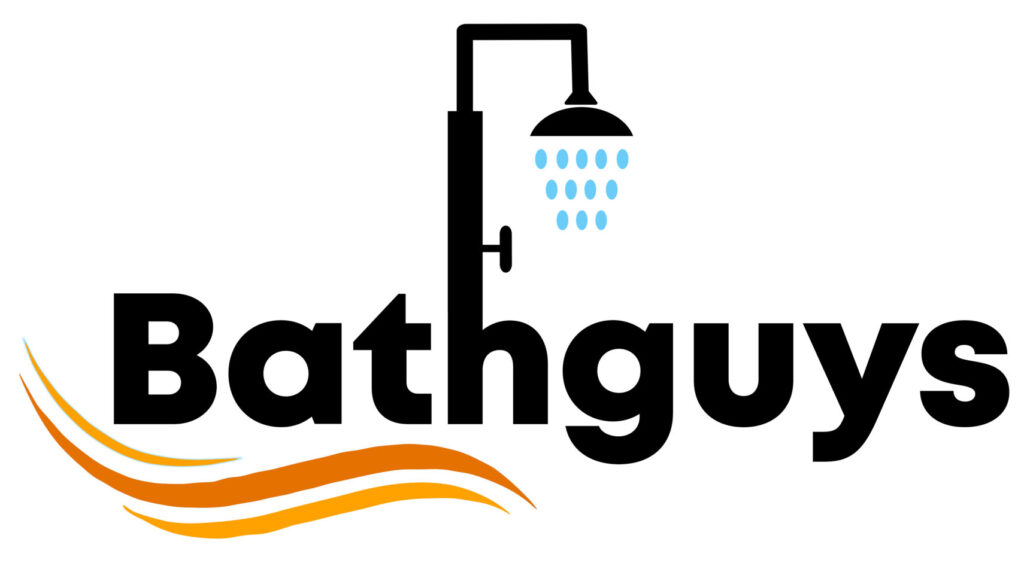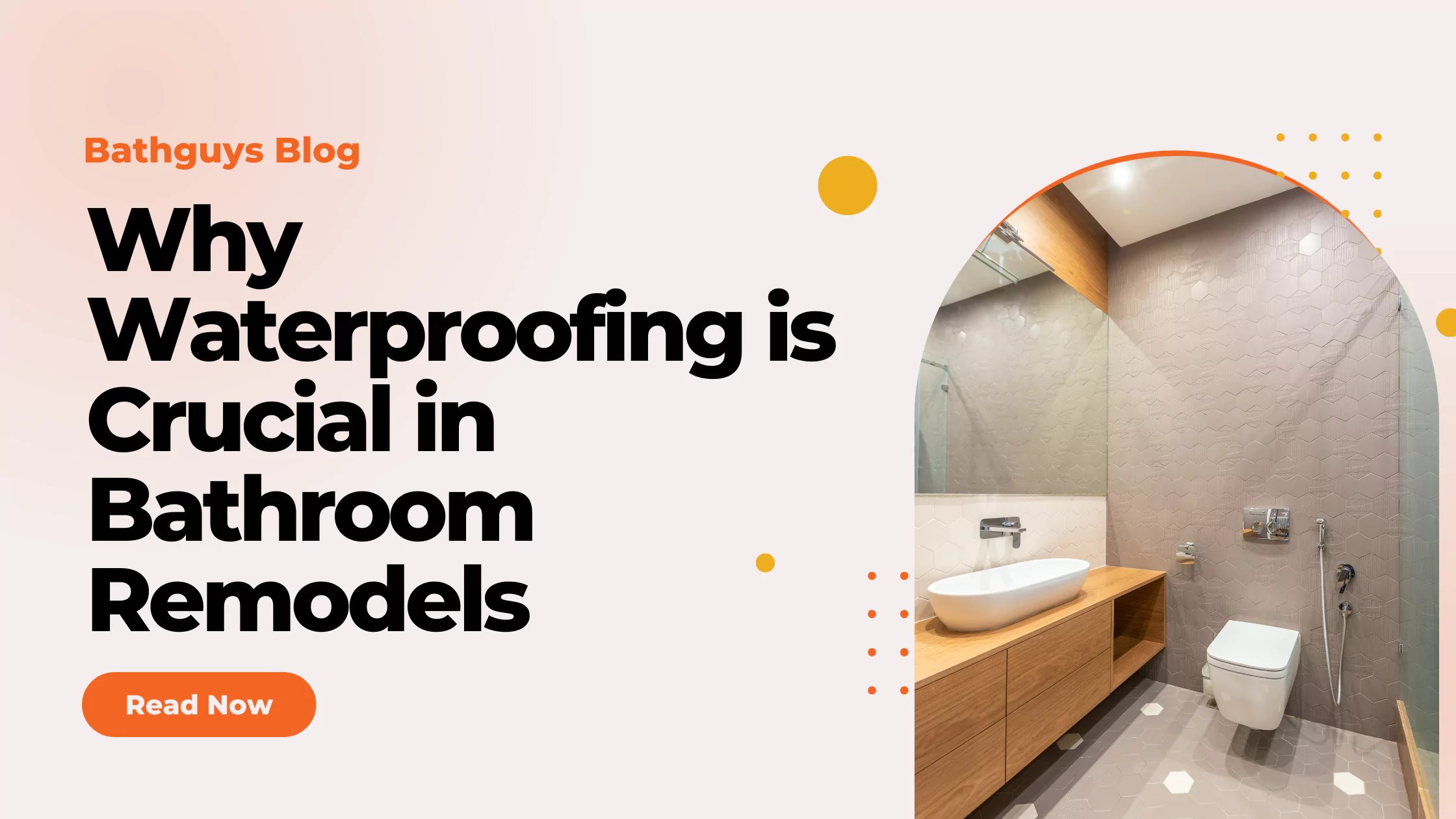In bathroom remodeling, one aspect that should never be forgotten is waterproofing. Why waterproofing is important in bathroom remodels is something most homeowners in Toronto and the GTA forget until it’s too late. Water damage in bathrooms can cause mold, structural issues, and expensive repairs, which no homeowner wants to encounter. Whether you’re updating a small powder room or doing a complete overhaul, ensuring that your bathroom is properly waterproofed is the key to avoiding these issues.
Here in this guide, we will lead you through the role of waterproofing during a bathroom renovation and how it can benefit you from suffering from headaches in the future. Waterproofing is a critical step to take if you want your bathroom to be safe, long-lasting, and fashionable. Read on and see why it is one of the wisest investments you can make in your bathroom makeover.
Table of Contents
What is Bathroom Waterproofing?
Bathroom waterproofing is the process of shielding your bathroom surfaces from water damage by using special materials or coatings. During a bathroom renovation, this means sealing areas that are most likely to be exposed to moisture, including the shower, bathtub, floors, and walls. The aim is to keep water from penetrating into the underlying structures, which can cause expensive damage over time.
There are several waterproofing options, including waterproof membranes, sealants, and liquid-applied coatings. These materials create a barrier of protection that stops water from penetrating and causing harm to sensitive areas such as drywall, wood, or flooring. A well-done waterproofing ensures that your bathroom is dry and safe and minimizes the risk of mold growth and water damage.
By knowing why waterproofing is so important during bathroom remodels, homeowners are better equipped to make decisions regarding the materials and methods utilized, helping their bathroom remain functional and long-lasting for years to come.

The Importance of Waterproofing in Bathroom Remodels
Of all the steps involved in bathroom remodels, waterproofing is one of the most crucial. Bathrooms are in constant contact with water, making them particularly prone to water damage, mold infestation, and structural damage. Without waterproofing, even a small leak can cause serious problems, impacting the look and safety of your bathroom.
Waterproofing your bathroom protects the most important areas such as the shower, tub, and sink from water infiltration. Not only does this deter damaging mold and mildew growth, but it also increases the lifetime of your bathroom components and materials. For instance, when water penetrates walls and floors, it deteriorates structures, leading to costly repairs and replacements in the future. In Toronto’s humid weather, making sure your bathroom is completely waterproofed is essential to prevent these expensive damages.
By waterproofing your bathroom when you’re remodeling, you’re ensuring that your area remains dry, secure, and long-lasting. Waterproofing is a preventive step that spares you from long-term hassles and keeps your bathroom in its best condition and functionality.
How Waterproofing Prevents Water Damage and Mold Growth
Proper bathroom waterproofing is an essential defense mechanism against water damage in homes. Bathrooms, naturally, get much higher moisture levels due to showers, baths, and sinks, resulting in an ideal invitation for water seepage. Minor leaks here could become rather significant with a bad waterproofing system.
Water can penetrate walls, floors, and ceilings, causing the structure to weaken over time. The constant moisture provides the ideal breeding ground for mold and mildew, which not only destroys surfaces but can also be a severe health hazard. Exposure to mold can cause respiratory problems and allergic reactions, which is why it is so vital to keep your bathroom dry.
Through the use of proper waterproofing techniques like membranes, sealants, and coatings, you keep water from seeping through these surfaces. This prevents water damage from happening at its origin and makes it so that mold does not even have an opportunity to form. Furthermore, effective waterproofing increases the longevity of your bathroom fixtures and materials, which will save you money on repairs and replacements down the road.
With proper waterproofing, you get to have a dry, healthy bathroom, free from water damage and mold issues.
Different Waterproofing Techniques for Bathroom Remodels
When it comes to bathroom waterproofing, there are several effective techniques to choose from, depending on your needs and the specific areas being renovated. Let’s explore some of the most common waterproofing solutions used during a bathroom remodel.
1. Waterproof Membranes
The most common of these is the waterproof membrane. Thin sheets of material are placed on bathroom walls and floors to provide a seal that will keep water out. Membranes are usually plastic or rubber and are particularly useful in applications such as showers or near bathtubs. They are hard-wearing, long-lasting, and simple to fit, and therefore highly recommended for homeowners.
2. Liquid-Applied Waterproofing
Liquid-applied waterproofing is also a wonderful alternative. It’s a method where a liquid substance is applied to surfaces and dries into an impermeable, seamless seal. It’s perfect for oddly shaped areas or spaces that are perhaps hard to encapsulate with membranes. Liquid-applied waterproofing is commonly applied to floors, walls, and even around equipment to provide full water protection. It’s a flexible seal that complies with thermal expansion, so it’s very effective in Toronto’s fluctuating weather.
3. Cementitious Waterproofing
Cementitious waterproofing entails the application of a thick layer of a cement-based material on bathroom surfaces. It’s a simple, budget-friendly option that is effective for concrete and masonry surface protection. Although not as flexible as liquid products, it creates a solid, waterproof seal that resists high water pressure. Cementitious waterproofing is typically used in spaces such as basements or bathrooms with existing concrete flooring.
4. Waterproofing Sealants
For less complex, smaller bathroom spaces, waterproofing sealants might be just the ticket. Applied directly to surfaces like grout lines, tiles, and joints, these products fill the minuscule cracks and crevices that let water in. Though they might have to be reapplied at some point, sealants are a cost-effective, easy means of improving the waterproofing of your bathroom.
5. Backer Board Waterproofing
In other instances, waterproofing backer board is applied. This includes the installation of a moisture barrier board behind tile or other finishes. The backer board works as a waterproof barrier to stop water from infiltrating the walls and framing of your bathroom. It’s particularly effective in moisture-rich areas such as showers and tub surrounds.
Selecting the correct waterproofing method depends on the bathroom remodel type, your financial situation, and the degree of moisture protection required. Hiring a professional GTA waterproofing contractor guarantees that the proper method is applied to your particular scenario, preventing future water damage.

Selecting the Proper Waterproofing Contractor in Toronto and GTA
When considering bathroom waterproofing, the selection of the contractor is as critical as the selection of the right materials. A qualified waterproofing contractor would ensure that your bathroom is well-defended against water damage and mold infestation. Below are the things you need to know when you select the best waterproofing contractors in Toronto and GTA.
1. Search for Experience and Expertise
The first thing to look at is the contractor’s experience with waterproofing bathroom remodels. Find a company that has a good track record in the Toronto and GTA regions. A contractor who specializes in bathroom renovations and waterproofing will know the specific challenges of your local climate and how to best waterproof your bathroom against water-related problems.
2. Check Credentials and Licenses
Make sure the contractor is properly licensed and insured. A good waterproofing contractor will possess the right credentials to operate in your region and will have insurance to cover both you and their employees in case of injury. This is essential to guarantee good workmanship and to prevent future liabilities.
3. Read Reviews and Testimonials
One of the most reliable methods to assess the quality of a contractor’s work is by reading reviews and testimonials from customers. Check for other customers who have received similar bathroom waterproofing service in the Toronto region. You can be assured if you see good reviews and practical examples about the contractor’s capabilities to work on your project.
4. Get Multiple Quotes
It’s wise to always acquire quotes from no less than two or three builders. This way, you have a better gauge of the estimated cost for waterproofing services for a bathroom in Toronto and could compare services that are being presented. A credible contractor will inform you of his pricing and has the ability to detail the pricing for you with materials, work, and if any other added services.
5. Ask About the Warranty
Ensure you inquire about the warranty of waterproofing service. A reliable contractor should ensure they stand by their work and provide a guarantee for a stipulated period of time. It is particularly relevant as waterproofing faults may be invisible in the first instance and you need confidence that the contractor will rectify faults if encountered.
6. Hire a Local Contractor
Using a local contractor has a number of advantages, particularly in a major city like Toronto. Local contractors understand the local climate and building codes, both of which are important for effective waterproofing. In addition, hiring a Toronto-based waterproofing contractor means quicker response times and greater individualized service.
By doing it this way and selecting a reputable, experienced GTA waterproofing contractor, you will be able to get your bathroom renovation done the first time around, saving yourself time, money, and a headache down the road.
The Risks of Skipping Waterproofing During a Bathroom Remodel
Omitting waterproofing in your bathroom renovation may look like an easy way to save time and money, but the consequences outweigh any temporary cost savings. Omitting adequate bathroom waterproofing can result in severe problems that might not be apparent at first but will be expensive to correct in the future. Here’s why omitting waterproofing is a bad idea.
- Structural Elements Water Damage: Water damage is among the most frequent results of failing to waterproof your bathroom. Water, over time, can penetrate walls, floors, and ceilings and cause wood, drywall, and other materials to rot. This can compromise the integrity of your bathroom, resulting in sagging floors, crumbling walls, and other expensive repairs. In Toronto’s humid environment, moisture control is even more important to avoid these problems.
- Mold and Mildew Growth: Without waterproofing, water seeps into places such as grout lines, beneath tiles, and in corners, providing the ideal environment for the growth of mold and mildew. Mold can develop rapidly and lead to health issues, particularly in individuals with respiratory issues or allergies. Mold remediation also may prove costly and inconvenient to your family life. Waterproofing keeps moisture out and ensures that mold does not establish itself.
- Greater Long-Term Expenses: Although bypassing waterproofing may cost you less initially, it could result in significantly higher costs later on. Repairing water damage, removing mold, and replacing compromised materials could add up quite fast. Many times, you may even be forced to resurface some or all of your bathroom remodel, which means paying twice.
- Lowered Property Value: If water damage and mold issues are left unchecked, they can affect the overall worth of your home. Prospective buyers will most likely be discouraged by evidence of water damage, mold, or mildew, thus making it more difficult to sell your house or lowering its value. Waterproofing is an investment that not only saves your bathroom but also your entire property.
- Regular Maintenance and Repairs: Without the right waterproofing, your bathroom will be more susceptible to leaks, water stains, and needing constant repairs. From resealing tiles to repairing water damage, you’ll be spending time and money on ongoing maintenance. Effective waterproofing solutions render these repeat repairs unnecessary, saving you effort, time, and stress.

Also Read this: Best Bathroom Flooring Options for Canadian Homes
How to Budget for Waterproofing in Your Bathroom Remodel
When budgeting for a bathroom renovation, waterproofing should be planned for to secure long-term protection and prevent the need for costly repairs down the road. Waterproofing can feel like an unnecessary expense, but it’s actually a worthwhile investment that can end up saving you money in the long term by stopping water damage, mold growth, and structural problems. This is how you should budget for waterproofing on your bathroom renovation:
1. Determine the extent of the remodel
The initial step in waterproofing budgeting is to determine the extent of your bathroom remodel. Are you remodeling a small powder room or doing extensive work on a master bathroom? More extensive remodels, like complete shower installations or retiling, will need more extensive waterproofing. The greater the extent of the remodel, the greater the cost of materials and labor for waterproofing.
2. Select the Proper Waterproofing Method
The price of waterproofing products may differ greatly depending on the chosen method. Some of the most common methods are:
- Waterproof membranes: Robust and affordable for walls and floors.
- Liquid-applied waterproofing: Pricier but best suited for oddly shaped areas and hard-to-reach areas.
- Cementitious waterproofing: The cheapest option for concrete surfaces, but less flexible compared to other techniques.
- Waterproofing sealants: Usually the cheapest, applied to small areas or as a finishing coat.
Your builder will assist you in selecting the most suitable solution depending on your budget and the layout of your bathroom.
3. Include Labor Costs
Waterproofing is a professional process that needs proper installation to be successful. Labor cost will be different based on the project’s complexity and builder experience. For instance, if your bathroom renovation involves a bespoke shower or specialized fittings, you might need to account for additional time and expertise to get the waterproofing right. In the GTA and Toronto region, labor charges can vary between $50 and $100 per hour, depending on the contractor.
4. Factor in Unexpected Expenses
It’s always best to have a contingency fund of 10-15% of your entire bathroom renovation budget for surprise expenses. Throughout the renovation, unforeseen problems like water damage or mold could be revealed once the walls are cut open. With some extra funds, you can take care of these surprise repairs without compromising the quality of your waterproofing work.
5. Get Multiple Quotes
To make sure you’re paying a reasonable price for your waterproofing, have several contractors give you quotes. A good quote should itemize the cost of materials, labor, and additional services needed to waterproof. This will help you better understand how much you need to allocate towards this critical component of your bathroom renovation.
6. Think Long-Term
While waterproofing can feel like an added initial expense, it’s best to consider it an investment. Proper waterproofing shields your home from water damage, mold, and costly repairs, ultimately saving you money in the long run. Selecting quality waterproofing materials and professional contractors guarantees your bathroom remains safe, dry, and functional for years to come.
By taking the time to plan and budget for waterproofing, you’ll ensure that your bathroom remodel is a success and that your space remains beautiful and damage-free.
Conclusion
Incorporating waterproofing into your bathroom remodel is not just a wise decision but a necessary one. Whether you’re planning a small upgrade or a full renovation, waterproofing your bathroom ensures long-term protection against water damage, mold growth, and costly repairs. By choosing the right waterproofing methods and working with a skilled contractor in Toronto and the GTA, you can enjoy a beautiful, safe, and durable bathroom for years to come. Don’t skip this critical step—investing in proper waterproofing today will save you money and stress tomorrow.
FAQs
Why is waterproofing important in bathroom remodels?
Waterproofing is crucial in bathroom remodels because it prevents water from seeping into the walls and floors, which can cause mold, mildew, and structural damage. This protection ensures that your bathroom remains safe, durable, and free from costly water damage in the future.
How much does bathroom waterproofing cost?
The cost of bathroom waterproofing varies based on the size of the space, the materials used, and labor rates. On average, homeowners in the GTA can expect to spend between $500 to $2,000, depending on the complexity of the job and the materials chosen for waterproofing
Can I waterproof my bathroom myself?
While DIY waterproofing is possible, it’s not always recommended due to the technical knowledge and expertise required for proper application. Hiring a professional ensures the job is done correctly, preventing costly mistakes and ensuring long-term protection against water damage.
How long does waterproofing last in a bathroom?
The longevity of waterproofing in a bathroom depends on the materials used and the conditions of the space. Typically, well-installed waterproofing can last 10-15 years. However, it’s essential to monitor for any signs of wear or damage to ensure your bathroom remains protected.
What are the best waterproofing methods for a bathroom?
The best waterproofing methods for a bathroom include using waterproof membranes, liquid-applied coatings, and sealants. Each method has its advantages, with membranes being ideal for large areas and liquid coatings effective for irregular spaces. Consulting with a professional will help you choose the right solution for your remodel.





